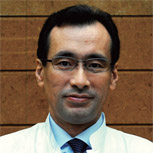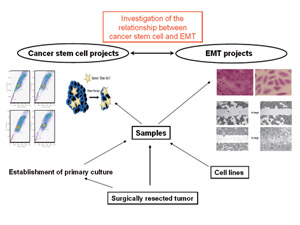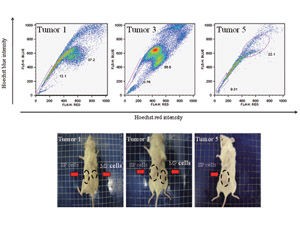HOME > Program Members > Yuko Kitagawa

Yuko Kitagawa

Professor, Department of Surgery, Graduate School of Medicine, Keio University
Yuko Kitagawa, MD, PhD
kitagawa@sc.itc.keio.ac.jp
http://web.sc.itc.keio.ac.jp/surgery/ggs/
Theme
It is essential for clinicians to investigate the mechanisms of tumor metastasis, local recurrence and peritoneal dissemination which may occur even after curative surgery. We are particularly focusing on cancer stem cells and epithelial-to-mesenchymal transition (EMT), which may lead to better understanding of some problematic phenomena in cancer patients. In this context, we are attempting to find methods targeting either cancer stem cells or EMT for clinical application. For instance, the role of the novel EMT inducer identified by our group will be analyzed particularly in relation to activation of the TGF-B pathway.
We are also attempting to generate human caner stem cell-like cells by transfection of human gastric cancer cells with 4 known genes to reprogram differentiated cells to pluripotent stem cells (iPS). We are currently analyzing these cells to understand the characteristics of cancer stem cells and develop possible methods targeting them. Furthermore, to prove chemotherapy resistant feature of cancer stem cells, we are evaluating caner stem cell like population in breast cancer patients before and after the neo-adjuvant chemotherapy. The obtained results will be useful for development of new methods both for diagnosis and clinical treatment.
Research activities
Side-population (SP) cells are a small subpopulation of cells with that represent an enriched source of gastric tumor-initiating cells (TICs), with stem-like cell properties, characterized by a high efflux ability for Hoechst 33342 dye, reflective of high expression levels of several subtypes of the ATP-binding cassette transporter family. We demonstrated the stem cell-like characteristics of SP cells derived from gastric cancer cell lines and primary gastric cancer cells as a possible subpopulation enriched with TICs, which were demonstrated to show chemoresistance and tumorigenicity in vivo. Considering the possibility, in the future, of the development of a novel therapeutic tool(s) targeting TICs, we shall continue this research with the aim of eventually applying the results to clinical usage.

Fig.1 Schematic model of EMT and cancer stemcell research by using surgically resected samples and its primary cultured cells.

Fig.2 Higher tumorigenic characteristic of SP cells derived from primary gastric cancer in immunodeficient mouse xenograft model.
Selected Paper
- Kitajima M, Kitagawa Y. Surgical treatment of esophageal cancer- the advent of the era of individualization. N Engl J Med 347(21):1705-1709, 2002.11.
- Hiraiwa K, Takeuchi H, Hasegawa H, Saikawa Y, Suda K, Ando T, Kumagai K, Irino T, Yoshikawa T, Matsuda S, Kitajima M, Kitagawa Y. Clinical significance of circulating tumor cells in blood from patients with gastrointestinal cancers. Ann Surg Oncol 15(11):3092-100, 2008.11
- Takeuchi H, Kitajima M, Kitagawa Y. Sentinel lymph node as a target of molecular diagnosis of lymphatic micrometastasis and local immunoresponse to malignant cells. Cancer Sci 99: 441-450, 2008
- Kitagawa Y, Kitajima M Gastroesophageal carcinoma. individualized surgical therapy. Surg Oncol Clin N Am 15(4):793-802, 2006.10.
- Kitagawa Y, Kitajima M. The endoscopic treatment combined to laparoscopy with sentinel node navigation for superficial GI cancers. Endoscopy , 39:471-475, 2007.05
Copyright © Keio University. All rights reserved.
